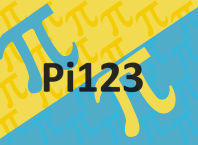CBSE board gives quality education to the students. It strives to provide the basics and standards of Mathematics to help students develop their overall scores. The board releases the CBSE syllabus for all the classes of each subject. Recognizing the syllabus and its importance in the exam pattern gives a student a proper base to start their preparation.
Many students find Maths to be a difficult subject. It is a scoring subject for the students who have a good handle on the concepts and fundamentals of Maths.
It is essential to prioritize the important topics. This will help you not only in creating timetables but also during revision for your examinations. Below mentioned are the tips and tricks for each chapter to help you give a clear idea about what topics to study for the CBSE Class 6 Maths:
Contents
- 1 Chapter 1: Knowing our numbers
- 2 Chapter 6: Integers
- 3 Chapter 7 & 8: Fractions and Decimals
- 4 Chapter 11: Algebra
- 5 Chapter 12: Ratio and Proportion
- 6 Chapter 10: Mensuration
- 7 Chapter 4 & 14: Basic Geometrical Ideas and Practical Geometry
- 8 Chapter 9: Data Handling
- 9 Chapter 3 & 13: Understanding Elementary Shapes and Lines of Symmetry.
Chapter 1: Knowing our numbers
This is a chapter where each student understands the concepts and is very easy to secure marks. According to the CBSE exam pattern, a maximum of two questions is asked from this chapter. The important topics are Conversion between Hindu-Arabic and Roman Numerals, using brackets to simplify calculations, Mathematical Operations on Large Numbers, the Indian and International systems of Numeration, and Comparing and Ordering Numbers. One should not forget to learn the metric conversion table. Simplification of the calculations is done on a basic logic of BODMAS. The most important topic of this chapter is the conversion between Hindu-Arabic and roman numerals.
Chapter 6: Integers
As the students are familiar with the number line, addition and subtraction of the integers become a plus point for them. This chapter is all about the addition and subtraction of integers and comparing and ordering the integers.
Chapter 7 & 8: Fractions and Decimals
These chapters are the scoring subjects of this subject. One must not skip these chapters. These are very easy to understand and easy to solve. Each student should understand the basic concepts of addition and subtraction of decimals and unlike and like fractions. These basics help the students to solve the word problems that appear later in the chapter. Comparing and ordering like and unlike fractions is the most important topic in this chapter, one question is sure to come from this topic.
Chapter 11: Algebra
This chapter is all about variables, equations, and the difference between the expressions. A student must be thorough with the basics to ace this chapter. Most of the students find this chapter interesting as it brings out curiosity and interest in them. This chapter also allows you to explore more methods by the trial-and-error factor of solving the equations. It is advised to keep practising more and different types of real-world problems to score more marks as this chapter holds more weightage in the exams.
Chapter 12: Ratio and Proportion
This chapter is the easiest of all the chapters and most students seem to love this. It is easy to score and easy to solve. The two concepts from this chapter are applications of ratios in solving problems and the unitary method. According to the previous year’s papers and the CBSE pattern, one question is sure to appear from the unitary method.
Chapter 10: Mensuration
The students can score marks in this section if they learn the formula perfectly. This chapter includes topics like the area and perimeter of the square, rectangle, and right triangle. It is also important to note that the students must mention the units for perimeter and square to avoid losing marks. Before solving the question, draw a neat labelled diagram of the figures with the measurements.
Chapter 4 & 14: Basic Geometrical Ideas and Practical Geometry
Chapter 4 is all the basics of geometry. Draw all figures clearly and neatly with proper labelling. Among the rectangle, quadrilateral, and circle and its attributes, circle, and attributes are important and appear in the exam more often. A student must familiarize the topics and terms such as points, line segments, lines, rays, planes, etc.
Chapter 5 is all about the construction of the Perpendicular Bisectors of Line Segments, Bisector of Angles, and Angles of Special Measures and its verification using compass and ruler. After the construction, steps of the same should be written neatly below it. The construction must be neat and labelled. Also, do not forget your geometry box at home.
Chapter 9: Data Handling
Data Handling is all about drawing bar graphs and pictographs. This is a very fun topic and most students are seen to score more marks in this chapter. The graphs should be neat with proper scales on the axis. Go through how to organize data using tally charts.
Chapter 3 & 13: Understanding Elementary Shapes and Lines of Symmetry.
Chapter 3 is a very basic topic and it is important to know the types and classifications of the angles, triangles, and quadrilaterals. The important topic of this chapter includes the identification and attributes of three-dimensional shapes. Draw neat diagrams with proper labels.
The other chapters from CBSE class 6th Maths include playing with numbers, whole numbers, and symmetry. These chapters are basic topics and one must know this thoroughly to proceed with the other chapters as they form the base for a few of the chapters.
Maths is a very interesting and fun subject when it comes down to solving and rewarding yourself with the answers. Make a study timetable according to the chapters you find more difficult to easy. Focus on your weak points and solve more problems to get a clear idea of how to solve the number of topics. Have a good grasp of concepts before jumping to the exercises. When it comes to solving, time management becomes difficult. Put yourself on a timer while solving a question. Don’t mug up the answers. Understand and solve. It will help you to avoid silly mistakes and secure more marks.












